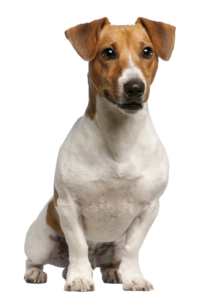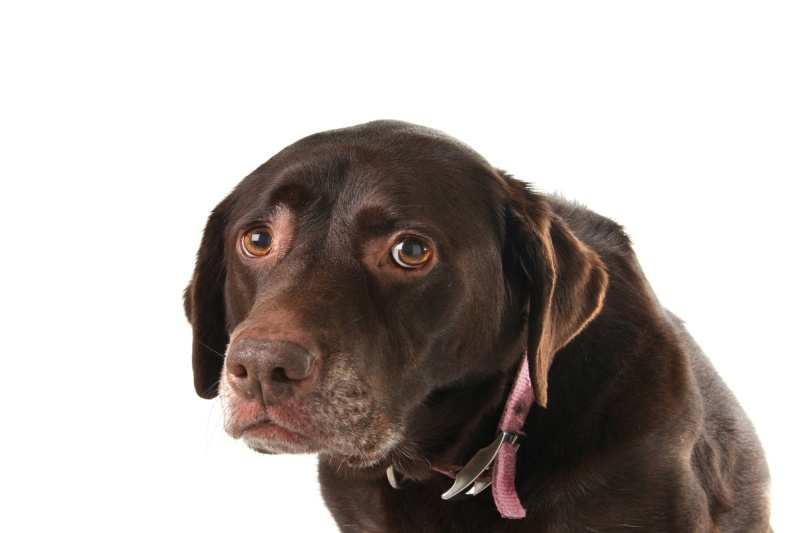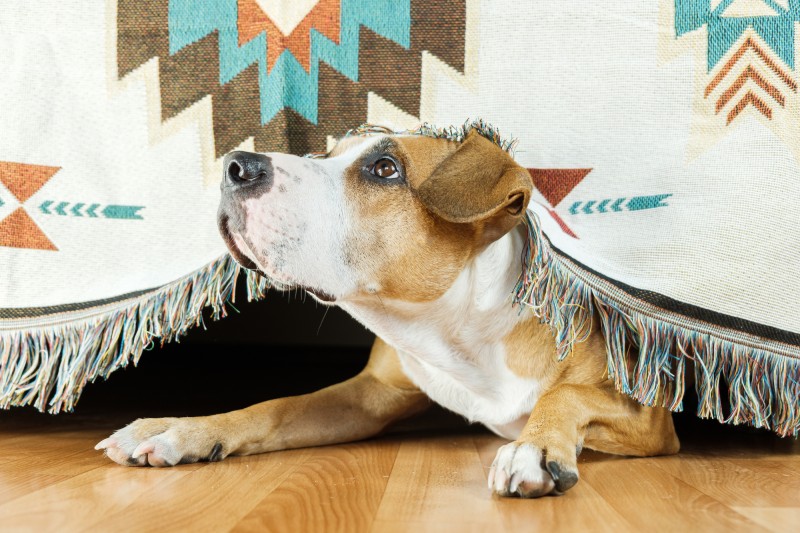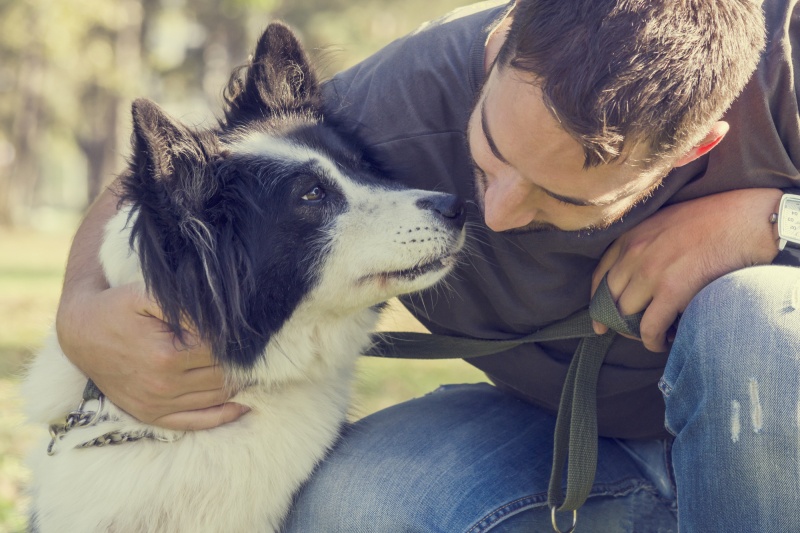The early months of a dog’s life are typically the most important in terms of its development. It is during this period that they learn about the world around them and create social relationships with humans and other dogs. This period is instrumental in shaping their personality, temperament, and reaction to a wide range of people, situations, and places. If your dog is scared of people, there is a chance that this fear began right here.
Dogs can grow up scared of humans due to a variety of factors, such as improper socialisation, mistreatment, health problems or genetic considerations, during this early phase of their life.
But no matter what’s making your dog afraid, you can still teach them how to relax around humans and develop positive behaviour. With carefully handled interactions with new adults or children, you can reduce the odds of your dog feeling threatened and help them to feel happy and confident.
Here are some tips that are good to keep in mind when dealing with a dog that’s scared of people while helping them become better adjusted to the people around them.
What causes dogs to be scared of people?
All sorts of factors can influence a dog’s reaction to humans. When a dog is scared of people, it feels anxious and nervous because it is being pushed beyond its comfort zone.
Here are some of the causes that can make your pet fear people.
Physical disorders
Diseases that trigger pain on contact, or ailments that impact the dog’s perception can make your pet associate pain and discomfort with humans.
Environmental factors
Going through a traumatic event, violent attack, or losing a friend or owner can lead to a chronic fear of people and other animals for dogs.
Genetic predisposition
Some dogs simply have a genetic predisposition to feeling higher levels of anxiety.
Developmental factors
A lack of proper socialisation during the early months of a dog’s life could reduce your dog’s ability to handle human contact.
The telltale signs that your dog is scared of people
- Ears pinned back
- Cowering
- Aggressive biting or snapping
- Shaking
- Head held low
- Trying to flee
- Anxious peeing
- Excessive vocalisations, such as barking, whining, and growling
- Showing teeth or lip tension
- The tail tucked beneath the abdomen
- Pacing
- Air chomping
- Excessive yawning
- Stress panting
- Face or nose-licking
- Frenzied tail chasing
- Showing their belly by rolling over
- Showing the whites of the eyes
What not to do when your dog is scared of people
While your intentions are pure and only intended to help your pooch “get over” its fear of people, you should nonetheless keep the following in mind:
- Don’t force the dog into social interactions, either with people or other dogs
- Don’t encourage other people to interact with your dog if it is likely to induce dog anxiety
- Don’t console your pet when it growls
- Don’t use methods like physically restraining your dog or holding it up in the air to force them into proximity to the person they have been actively trying to avoid
How to help when your dog is scared of people
Working with dogs who are scared of people is a slow and gradual process. It is crucial to be patient and loving with your pet while you fully embrace each of the steps below:
Some gentle counterconditioning
The beginning of this plan could involve the use of a little counterconditioning. While this sounds complicated – it’s quite a straightforward idea. In a nutshell, you want to condition your dog toward associating humans with positive things.
This can be achieved in a whole host of ways, from letting them watch people from a distance or giving them doggy-friendly treats whenever a visitor drops by your home. Whenever the visitor leaves, the treats stop coming. Within time, your pooch will begin to associate humans/visitors (“bad things”) with treats and snacks (“positive things”).
Two key terms – control and safety
Try to consider your home (which is also your dog’s home too!) a safe space that you can control. Try to apply this to any interactions that your pooch might have with visitors, family members, children etc.
For example, ask any guests to avoid making sudden movements or loud noises. You should also remind visitors that they shouldn’t try to hug the dog, loom over it or reach over its head to pet it. If your guests can stay sitting nearby and remain as chilled as possible, it will make your dog see this situation as less threatening.
It might also be worth considering keeping a muzzle or leash at arm’s length should you feel the need for better control. If your dog begins to show any signs of aggression, the muzzle and leash are right there to de-escalate the situation – just ensure your guest stays at a reasonable distance during these moments.
As one last note, you should consider confining the dog to a quiet room during crowded social gatherings – but make sure it has plentiful water and some dog-friendly toys to entertain itself in the meantime!
Make sure the other humans play along
To further expand on some earlier points, your guests and visitors must help out by acting as nonchalant and peaceful as possible. The more time that your dog spends with quiet, easy-going humans, the less it will fear humans as a whole.
For example, let your guest and your dog spend some time in the same room together (unless of course there are any signs of aggression present). Just let them hang out for a while! But your guest must ignore your dog – in the nicest way possible! It is a simple but effective way to get your pooch used to a human’s presence.
It is also important that your guest remains aware of specific things that can enhance their fear and anxiety, such as loud noises, raised voices, potent stimuli or even human accessories such as wheelchairs or walkers etc. It is better to slowly but surely introduce stimuli like these so it doesn’t alarm your pooch too much!
All things considered, we can’t overstate the importance of letting your guests know how to act when approaching your dog. Most dogs feel at ease when an unfamiliar person avoids doing things like making prolonged eye contact or squatting too close to them. They should approach your dog with caution and gentleness, keeping their hands visible and giving your scared pooch the reassurance that it needs.
Serene-UM from VetIQ – an antidote for scared doggies
For pets who have difficulty settling down with people even after implementing the above ideas, we recommend our Serene-UM drops or tablets and Healthy Treats Calming.
Serene-UM is a natural dietary supplement with a uniquely formulated blend of essential amino acids, vitamins and minerals. Veterinary professionals recommend Serene-UM to alleviate stress and tension in pets without making them drowsy.
The specially formulated solution controls your pet’s underlying emotional state. By calming your dog in the first place, behaviour learned from the stressful situation can be corrected through retraining.
Simply put, Serene-UM tablets help manage the cause of anxiety without having a sedative effect, and are also available in extra strength for larger anxious dogs!
Here at VetIQ, we wish you and your pet nothing but the best. If you’d like to read about more pet-related ideas and advice, don’t forget to check out our blog!








